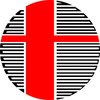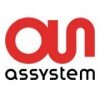Trainee Design Engineer
40+ Trainee Design Engineer Interview Questions and Answers
Asked in Tedra Automotive Solutions

Q. Explain the terms Limits, Fit, and Tolerances.
Limits Fit and Tolerances are terms used in engineering to define the acceptable range of dimensions for a part or assembly.
Limits Fit refers to the relationship between the maximum and minimum size of mating parts.
Tolerances are the allowable variations in dimensions for a part or assembly.
Limits Fit and Tolerances ensure proper functionality, interchangeability, and assembly of components.
Examples of Limits Fit include clearance fit, interference fit, and transition fit.
Tol...read more
Asked in UBC Impex

Q. What is the minimum percentage of steel required in a slab?
The minimum percentage of steel in a slab depends on various factors such as load, span, and thickness.
The minimum percentage of steel in a slab is generally 0.15% to 0.2% of the cross-sectional area.
The percentage of steel may vary depending on the type of slab, such as one-way or two-way slab.
The thickness of the slab also plays a crucial role in determining the minimum percentage of steel.
The load and span of the slab also affect the minimum percentage of steel required.
Th...read more
Asked in Precise Engineering Company

Q. How do you create a plastic mold diagram?
To make a plastic mould dia, you need to design the mould cavity and core with the desired diameter.
Design the mould cavity and core with the required diameter
Consider shrinkage of the plastic material when designing the mould
Use CAD software to create a 3D model of the mould
Select the appropriate material for the mould based on the type of plastic being used
Asked in Macbro Technology

Q. Types of plastic used in automotive industry
Various types of plastic are used in the automotive industry for different purposes.
Polypropylene (PP) is used for bumpers, dashboards, and interior trims.
Acrylonitrile Butadiene Styrene (ABS) is used for exterior trims, grills, and wheel covers.
Polycarbonate (PC) is used for headlights, taillights, and instrument panels.
Polyurethane (PU) is used for seats, armrests, and headrests.
Polyethylene (PE) is used for fuel tanks and pipes.
Polyamide (PA) is used for air intake manifol...read more
Asked in Prism Consulting Engineers

Q. Does resistance increase with temperature?
Yes, resistance generally increases with temperature.
In most materials, resistance increases with temperature due to increased collisions between electrons and atoms.
This phenomenon is known as positive temperature coefficient (PTC) of resistance.
However, in some materials like semiconductors, resistance decreases with temperature due to increased mobility of charge carriers.
This is known as negative temperature coefficient (NTC) of resistance.

Asked in Bajaj Steel Industries

Q. What purpose of pully. Where to use.
A pulley is a simple machine that changes the direction of a force, making it easier to lift heavy objects.
Used to lift heavy objects by applying less force
Changes the direction of a force
Commonly used in elevators, cranes, and exercise machines
Trainee Design Engineer Jobs



Asked in Schneider Electric

Q. Types of Plastics basic information Die
Types of plastics used in die design include thermoplastics, thermosets, and elastomers.
Thermoplastics can be melted and reformed, such as ABS and polyethylene
Thermosets are set during molding and cannot be remelted, like epoxy and phenolic resins
Elastomers are flexible and rubber-like, such as silicone and neoprene
Asked in Precise Engineering Company

Q. How do you set a scale for a die?
Setting a scale for a die involves determining the size and dimensions of the die based on the desired output.
Understand the specifications and requirements for the die
Calculate the dimensions and size of the die based on the material and design
Consider factors such as tolerance, material properties, and production process
Use CAD software for precise design and measurements
Test the die with sample materials to ensure accuracy and functionality
Share interview questions and help millions of jobseekers 🌟


Asked in Tutopia

Q. Which software are you familiar with?
I am proficient in CAD software such as AutoCAD, SolidWorks, and Fusion 360.
AutoCAD
SolidWorks
Fusion 360

Asked in Valeo

Q. What is your experience with working software?
Working software is software that is functional, reliable, and meets the requirements of the end users.
Working software should be able to perform the tasks it was designed for without errors or bugs.
It should be reliable and consistent in its performance.
The software should meet the needs and expectations of the end users.
Regular updates and maintenance should be done to ensure the software remains in working condition.
Examples: Microsoft Office, Adobe Photoshop, Google Chrom...read more
Asked in Machine House Technologies

Q. Types of material and GD and t
Types of material and GD&T
Materials can be classified as metals, polymers, ceramics, and composites
GD&T stands for Geometric Dimensioning and Tolerancing
GD&T is a system of symbols and rules used to specify the geometry of mechanical parts
GD&T helps to ensure that parts are manufactured to the correct size, shape, and orientation
GD&T includes symbols for features like flatness, parallelism, perpendicularity, and circularity

Asked in Dran Engineers

Q. Types Of Manufacturing Processes
Manufacturing processes are methods used to create products from raw materials, involving various techniques and machinery.
Casting: pouring molten material into a mold to create a solid shape (e.g. metal casting)
Machining: removing material from a workpiece to achieve desired shape and size (e.g. milling, turning)
Forming: shaping materials using force or pressure (e.g. bending, stamping)
Joining: combining multiple parts to create a single product (e.g. welding, soldering)
Addi...read more

Asked in Suzlon Group

Q. What is the difference between AC and DC?
AC and DC are two types of electrical current. AC changes direction periodically while DC flows in one direction only.
AC stands for Alternating Current and DC stands for Direct Current
AC is used for power transmission over long distances while DC is used for short distances
AC can be easily converted to different voltages using transformers while DC cannot
AC is used in household appliances while DC is used in electronic devices such as computers and mobile phones

Asked in Thermo Cables

Q. Autocad drawings in 2D & 3D
Autocad is a software used for creating 2D and 3D drawings for engineering designs.
Autocad is a popular software used by design engineers for creating precise 2D drawings.
It also allows for the creation of detailed 3D models for visualization and analysis.
Autocad offers a wide range of tools for drafting, modeling, and annotation.
Design engineers use Autocad to create blueprints, schematics, and technical drawings for various projects.
Proficiency in Autocad is essential for d...read more

Asked in Schneider Electric

Q. Last Industry Work
Worked as a design intern at XYZ Engineering, where I assisted in creating CAD models and conducting simulations.
Assisted in creating CAD models for new product designs
Conducted simulations to test the performance of prototypes
Collaborated with senior engineers to refine designs based on feedback

Asked in Wafer Space

Q. Design an 8-bit counter.
An 8-bit counter counts from 0 to 255 in binary, using flip-flops and logic gates for digital applications.
An 8-bit counter can represent values from 0 (00000000) to 255 (11111111).
It typically uses 8 flip-flops, each representing one bit.
Counters can be synchronous (all bits change simultaneously) or asynchronous (bits change in sequence).
Common applications include digital clocks, frequency counters, and timers.
Example: A binary counter increments its value on each clock pu...read more

Asked in Wafer Space

Q. Realisation of gates
Realisation of gates involves creating logical operations using electronic components like transistors.
Gates can be realized using various technologies such as CMOS, TTL, or RTL.
For example, an AND gate can be built using two transistors in series.
NAND gates are universal gates, meaning they can be used to create any other gate.
Realization can also be done using software simulations in tools like Logisim.
Interview Experiences of Popular Companies









Reviews
Interviews
Salaries
Users


















